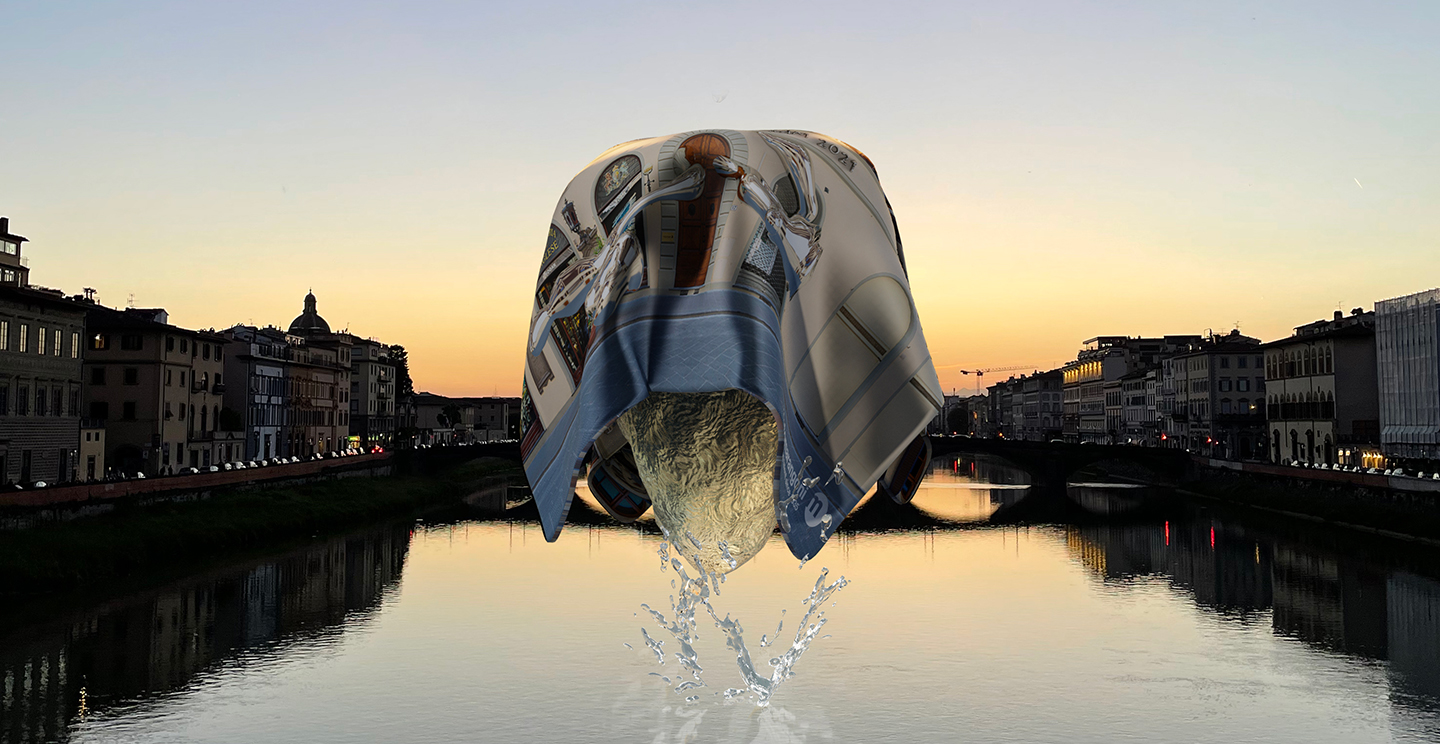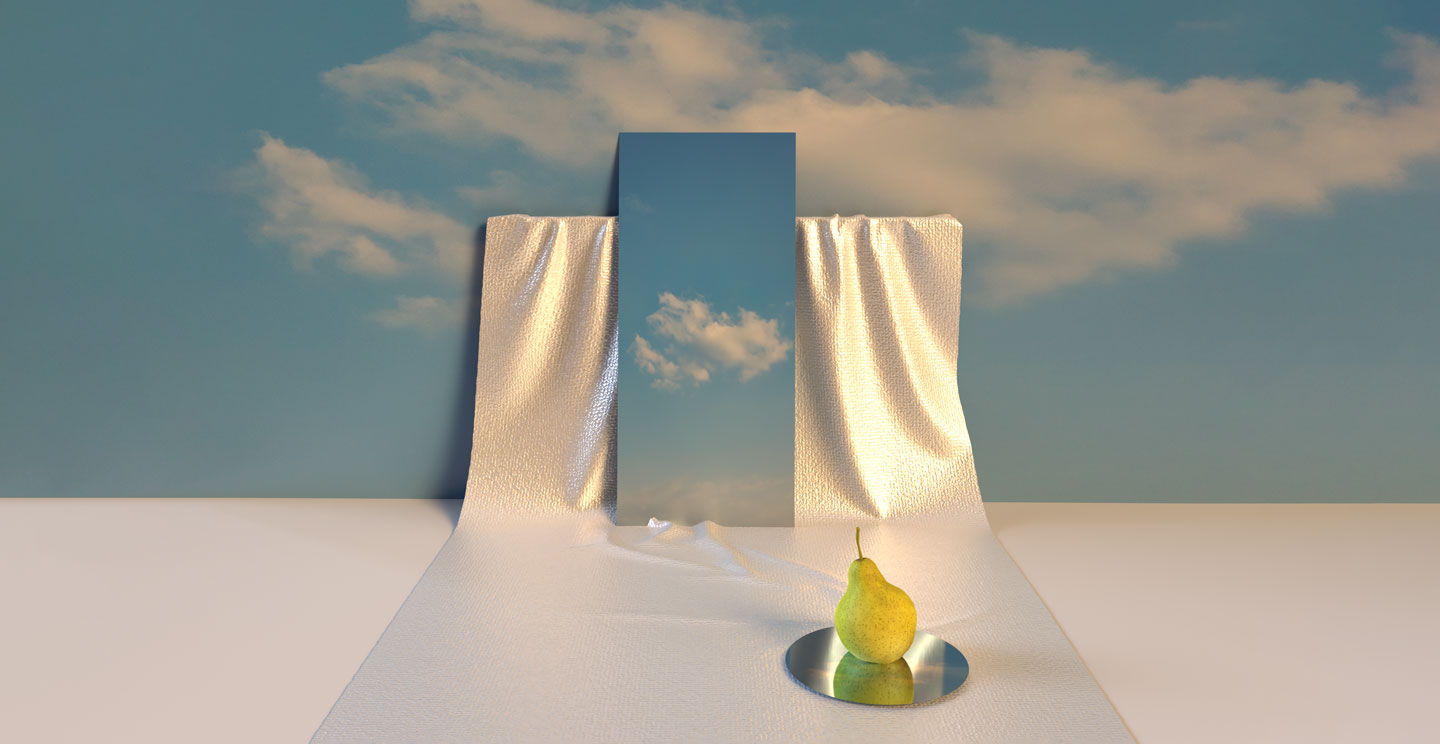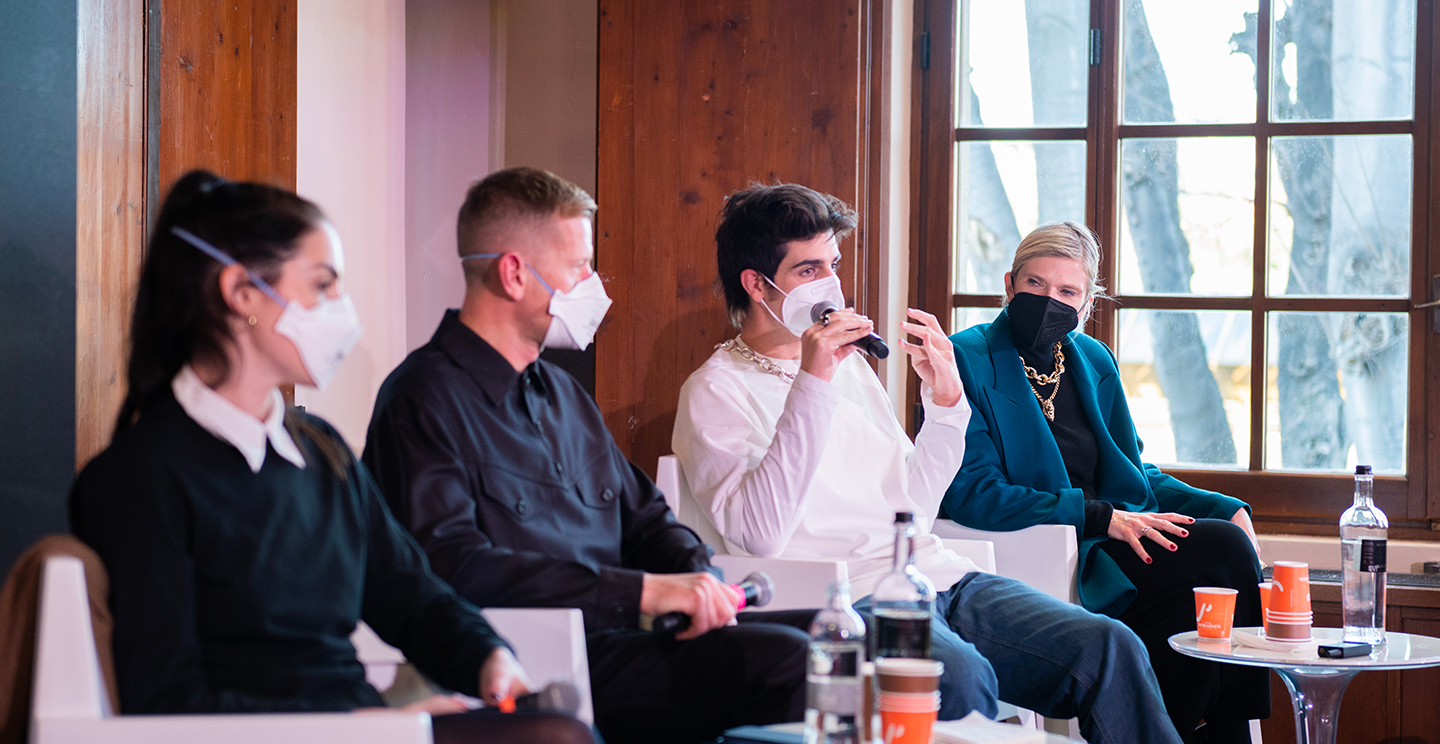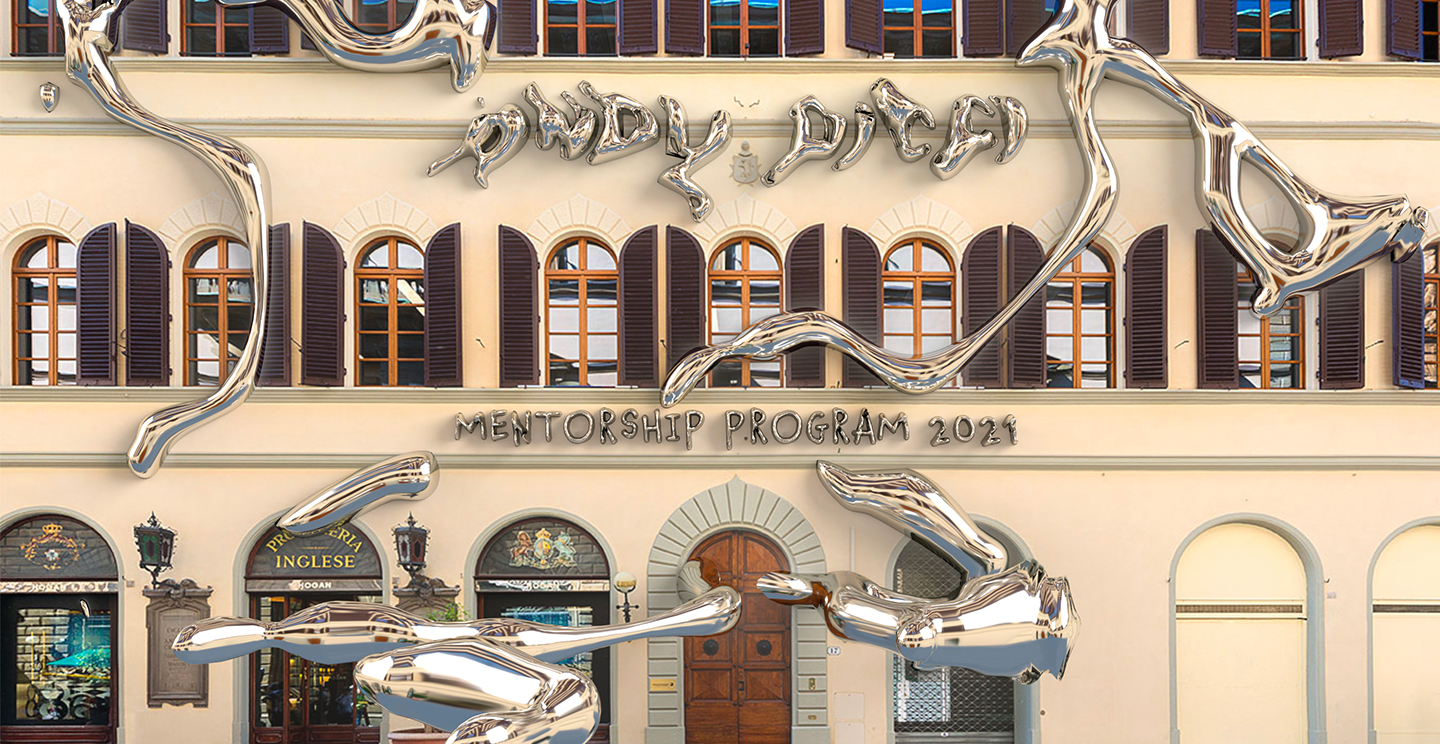


‘Artification’; ‘Phygitality’: if you have not heard of these words, it might be because you have not yet met artist Andy Picci. Fortunately, Istituto Marangoni did, appointing him as a mentor at the school. As a contemporary 3D artist, Picci’s work revolves around fame, social networks and the profound quest for self-identity.
The torments about the new age of social media dominance are his obsessions. His Instagram profile is full of graphics that combine the real and the surreal, evoking a dreamlike dimension.
At the latest IMAC-Istituto Marangoni Advisory Committee in Florence, we asked Andy Picci about the process of creating collaborations between fashion houses and artists, the allure of new technologies and augmented reality, and how he is shaping his mentorship at Firenze School.

Picci's exclusive Artwork for his mentorship at IM Firenze School
To be an artist or not to be (considered) an artist seems to be today’s question...
Many people say that my works are not art, so I seize the moment to introduce a question: what is art? There is no precise answer, but I think art takes place in a specific context and reflects our society.
How do social media interact with identity?
I guess we can all agree that digitisation is an essential part of society today: the opposition of reality is nowadays the augmentation of reality. The way we experience and build ourself online is like a continuity of the eternal quest for identity that human beings have, and I guess the same goes with art. What today we call ‘new technologies’ are new mediums. For example, photography used to be a new technology back in the day; even some painting techniques like new brushes or spray paint for street art can be considered a new technology!
What about ‘Artification’?
I think it is a super interesting topic. Today there is a blurred line between what is art, what we do consider as art, what is ‘proud’ enough to be regarded as traditional art and what the audience consumes. This is why brands are so interested in collaborating with artists: in the past, what brands asked artists was to create a precise visual they needed.
Today brands ask artists to think out of the box and bring ideas that an in-house brand team could not come up with since they are not part of this artistic process.

"Bonne Poire" Artwork by Andy Picci
How do artists collaborate with a brand?
A few decades ago, an artist choosing to collaborate with a brand was supposed to have a compromise discussion with the brand. Today, the brand gives value to the artwork. This brings me back to what I said initially: what I do is 3D renderings, no matter what I am trying to say.
Each artist has their discussion elements and focal points, depending on their background and the covered topic.
The fil rouge to keep in mind is how we as artists can use brands to get artistic value to work. Brands can unlock budgets that would be hard to find for an artist, and they can also help improve the connections between people and come up with new ideas.
What about your project with Porsche?
The brand partnered with KÖNIG Galerie to involve digital artists to showcase their work in a physical world. I did not get any guidelines to follow, but they just gave me this claim ‘Porsche is the car you dream of having: what is your perception of dream?’.
I came up with my reflection: ‘I dream of having a dream.’ I then showcased my work in Shibuya Crossing, Times Square, Seoul, Berlin… Suddenly, they offered me a dream!
‘Freedom’ seems to be a keyword for these great collaborations to be both possible and successful...
This kind of interaction between artists and brands is essential: to leave the freedom of creativity to the artist is what makes the most of your own identity. By following this orientation, the artist has the opportunity to bring different levels of interpretation of a product.
How does your work affect high-end companies by merging the physical and digital worlds through art?
Another critical point to highlight about the collaboration with Porsche is bringing the digital into the physical, or what we call ‘Phygitality’, one of today’s primary trends.
We do not want to separate virtuality from reality, the aim is to create an experience that can enhance your reality with virtuality.
New technologies such as interactivity, or augmented reality, offer a new way of understanding our surroundings.
For example, I design clothes online for the Fashion industry, and now “ok, how can I make my physical clothes digitally interactive”?
Do you find any connection between fashion and art?
Indeed, there is a strong link between fashion and art, which lies in the possibility to create in a ‘mixed’ reality what cannot exist in what we use to consider reality.
Sarah Coleman and Paul Andrew are also mentors at the Firenze School. What do you appreciate the most about their work?
I love how Sarah (Coleman, EdN) uses stock from brands to create new products that are not the official ones by Fendi or Luis Vuitton; or Paul (Andrew, EdN), who draws inspiration from Brancusi or Hitchcock.
What is going on today with this creative polyvalence and mixed media is that we can find connections between fashion and art to create new products.

Andy Picci with Sarah Coleman and Paul Andrew in Florence
Why is collaboration so important in fashion?
Today, the community is a vital aspect of creation – I am thinking about Balenciaga with Kanye West or Luis Vuitton with Virgil Abloh.
How about your mentorship with Istituto Marangoni students?
I am trying to put these words into practice with my mentorship here in Florence. Instead of doing some competition or evaluating which work is better, I want to create some sort of big collaboration where all the students contribute to a more extensive artwork.

Picci's exclusive artwork for his mentorship at IM Firenze School
Tomorrow is a mystery, but what is the future of creativity?
I think the key to the future is to understand that we do not live anymore in the capitalistic 1980’s vision where everything was about competition; we now live in a world where everybody can add a stone and, in the end, the house stands by itself.
Andy Picci talking about art during the latest Global IMAC in Florence.
Moderated by IM Programme Leader Arts Francesca Giulia Tavanti
Silvia Tarini
Editorial Team



